The global waterborne coatings market is expected to grow from USD 74.21 billion in 2019 to USD 106.34 billion by 2027, at a CAGR of 4.6% during the forecast period 2020-2027.
Waterborne coatings use water to dissolve a resin instead of other solvents. It has low Volatile Organic Compound (VOC) levels making it environment-friendly and helpful in reducing emissions. The composition of the coating changes with the amount of water and other solvents in it. The different solvents that are used in the waterborne coatings as binders are polyvinyl ethers, glycol ethers, polyacrylate, or polyurethane. The coatings have excellent heat resistance and abrasion. They are easy to apply, stain-resistant, flexible, and prevents corrosion and hardness.
The primary driver for the growth of the market is the rising adoption of green and eco-friendly coatings by the end-user industry and growing strictness of environmental regulations. The rise in incomes of people and high economic growth is contributing to the growth of the automotive and construction industries. The characteristics like non-flammable, odourless, long shelf life, non-toxic are expected to fuel the growth of the market.
This study delivers a comprehensive analysis of applications, resin type, and regions. On the basis of application, the market can be divided into industrial and architectural uses. The industrial segment is further divided into automotive, packaging, general, protective, marine, wood, coil, and others. The architectural segment is further divided into residential and non-residential uses. The architecture segment is expected to account for the highest growth rate during the forecast period. The architectural waterborne coatings are used for both decorative and protective purposes. For decorative purposes, the coatings are used in doors, window frames, wood flooring, sculptures etc. For preventive purposes, it is used for exterior paints. The interior wall coatings hold a majority share in the agricultural segment. The automotive applications in the industrial segment are also projected to grow at a rapid pace due to its protective features and rise in demand for automobiles. On the basis of type of resin, the market can be divided into polyester, acrylic, alkyd, polyurethane, epoxy, Polytetrafluoroethylene (PTFE), Polyvinylidene Chloride (PVDC), and Polyvinylidene Fluoride (PVDF). The acrylic segment is expected to dominate the market share during the forecast period. The exceptional chemical and aesthetic properties has led to the widespread application of the acrylic coating driving the market growth. The features of durability, flexibility, UV resistance, and colour retention has led to high demand of the coating in construction, medical, automotive, and metal refinishing industries.
The market for waterborne coatings has been segmented into North America, Europe, Asia-Pacific, Middle East & Africa, and South America. Europe is expected to dominate the market share due to strict regulatory requirements prevalent in the region. Asia-Pacific region is expected to portray the highest growth rate in the forecast period due to a rise in industrialization.
The leading players of the market include Akzo Nobel N.V., BASF SE, Axalta Coating Systems, Berger Paints, PPG Industries, Sherwin Williams, and The Valspar Corporation. The companies are focusing on research and development for product innovations, partnerships, and expansion of market share.
Global Waterborne Coatings Market Analysis And Forecast, By Application
Global Waterborne Coatings Market Analysis And Forecast, By Resin Type
Global Waterborne Coatings Market Analysis And Forecast, By Regional Analysis
Report Description:
1. Introduction
1.1. Objectives of the Study
1.2. Market Definition
1.3. Research Scope
1.4. Currency
1.5. Key Target Audience
2. Research Methodology and Assumptions
3. Executive Summary
4. Premium Insights
4.1. Porter’s Five Forces Analysis
4.2. Value Chain Analysis
4.3. Top Investment Pockets
4.3.1. Market Attractiveness Analysis By Application
4.3.2. Market Attractiveness Analysis By Resin Type
4.3.3. Market Attractiveness Analysis By Region
4.4. Industry Trends
5. Market Dynamics
5.1. Market Evaluation
5.2. Drivers
5.3. Restraints
5.4. Opportunities
6. Global Waterborne Coatings Market Analysis and Forecast, By Application
6.1. Segment Overview
6.2. Architectural
6.2.1. Residential
6.2.2. Non-Residential
6.3. Industrial
6.3.1. Automotive
6.3.2. Protective
6.3.3. General Industrial
6.3.4. Wood
6.3.5. Packaging
6.3.6. Coil
6.3.7. Marine
6.3.8. Others
7. Global Waterborne Coatings Market Analysis and Forecast, By Resin Type
7.1. Segment Overview
7.2. Polyester
7.3. Acrylic
7.4. Alkyd
7.5. Polyurethane
7.6. Epoxy
7.7. Polytetrafluoroethylene (PTFE)
7.8. Polyvinylidene Chloride (PVDC)
7.9. Polyvinylidene Fluoride (PVDF)
8. Global Waterborne Coatings Market Analysis and Forecast, By Regional Analysis
8.1. Segment Overview
8.2. North America
8.2.1. U.S.
8.2.2. Canada
8.2.3. Mexico
8.3. Europe
8.3.1. Germany
8.3.2. France
8.3.3. U.K.
8.3.4. Italy
8.3.5. Spain
8.4. Asia-Pacific
8.4.1. Japan
8.4.2. China
8.4.3. India
8.5. South America
8.5.1. Brazil
8.6. Middle East and Africa
8.6.1. UAE
8.6.2. South Africa
9. Global Lithium Compound Market-Competitive Landscape
9.1. Overview
9.2. Market Share of Key Players in Global Waterborne Coatings Market
9.2.1. Global Company Market Share
9.2.2. North America Company Market Share
9.2.3. Europe Company Market Share
9.2.4. APAC Company Market Share
9.3. Competitive Situations and Trends
9.3.1. Product Launches and Developments
9.3.2. Partnerships, Collaborations, and Agreements
9.3.3. Mergers & Acquisitions
9.3.4. Expansions
10. Company Profiles
10.1. Akzo Nobel N.V
10.1.1. Business Overview
10.1.2. Company Snapshot
10.1.3. Company Market Share Analysis
10.1.4. Company Product Portfolio
10.1.5. Recent Developments
10.1.6. SWOT Analysis
10.2. BASF SE
10.2.1. Business Overview
10.2.2. Company Snapshot
10.2.3. Company Market Share Analysis
10.2.4. Company Product Portfolio
10.2.5. Recent Developments
10.2.6. SWOT Analysis
10.3. Axalta Coating Systems
10.3.1. Business Overview
10.3.2. Company Snapshot
10.3.3. Company Market Share Analysis
10.3.4. Company Product Portfolio
10.3.5. Recent Developments
10.3.6. SWOT Analysis
10.4. Berger Paints
10.4.1. Business Overview
10.4.2. Company Snapshot
10.4.3. Company Market Share Analysis
10.4.4. Company Product Portfolio
10.4.5. Recent Developments
10.4.6. SWOT Analysis
10.5. PPG Industries
10.5.1. Business Overview
10.5.2. Company Snapshot
10.5.3. Company Market Share Analysis
10.5.4. Company Product Portfolio
10.5.5. Recent Developments
10.5.6. SWOT Analysis
10.6. Sherwin Williams
10.6.1. Business Overview
10.6.2. Company Snapshot
10.6.3. Company Market Share Analysis
10.6.4. Company Product Portfolio
10.6.5. Recent Developments
10.6.6. SWOT Analysis
10.7. The Valspar Corporation
10.7.1. Business Overview
10.7.2. Company Snapshot
10.7.3. Company Market Share Analysis
10.7.4. Company Product Portfolio
10.7.5. Recent Developments
10.7.6. SWOT Analysis
List of Table
1. Global Waterborne Coatings Market, By Application , 2017–2027 (USD Billion)
2. Global Architectural, Waterborne Coatings Market, By Region, 2017–2027 (USD Billion)
3. Global Residential, Architectural Market, By Region, 2017–2027 (USD Billion)
4. Global Non-Residential, Architectural Market, By Region, 2017–2027 (USD Billion)
5. Global Industrial, Waterborne Coatings Market, By Region, 2017–2027 (USD Billion)
6. Global Automotive, Industrial Market, By Region, 2017–2027 (USD Billion)
7. Global Protective, Industrial Market, By Region, 2017–2027 (USD Billion)
8. Global General Industrial, Industrial Market, By Region, 2017–2027 (USD Billion)
9. Global Wood, Industrial Market, By Region, 2017–2027 (USD Billion)
10. Global Packaging, Industrial Market, By Region, 2017–2027 (USD Billion)
11. Global Coil, Industrial Market, By Region, 2017–2027 (USD Billion)
12. Global Marine, Industrial Market, By Region, 2017–2027 (USD Billion)
13. Global Others, Industrial Market, By Region, 2017–2027 (USD Billion)
14. Global Waterborne Coatings Market, By Resin Type , 2017–2027 (USD Billion)
15. Global Polyester, Waterborne Coatings Market, By Region, 2017–2027 (USD Billion)
16. Global Acrylic, Waterborne Coatings Market, By Region, 2017–2027 (USD Billion)
17. Global Alkyd, Waterborne Coatings Market, By Region, 2017–2027 (USD Billion)
18. Global Polyurethane, Waterborne Coatings Market, By Region, 2017–2027 (USD Billion)
19. Global Epoxy, Waterborne Coatings Market, By Region, 2017–2027 (USD Billion)
20. Global Polytetrafluoroethylene (PTFE), Waterborne Coatings Market, By Region, 2017–2027 (USD Billion)
21. Global Polyvinylidene Chloride (PVDC), Waterborne Coatings Market, By Region, 2017–2027 (USD Billion)
22. Global Polyvinylidene Fluoride (PVDF), Waterborne Coatings Market, By Region, 2017–2027 (USD Billion)
23. Global Waterborne Coatings Market, By Region, 2017–2027 (USD Billion)
24. Global Waterborne Coatings Market, By North America, 2017–2027 (USD Billion)
25. North America Waterborne Coatings Market, By Application , 2017–2027 (USD Billion)
26. North America Waterborne Coatings Market, By Resin Type , 2017–2027 (USD Billion)
27. U.S. Waterborne Coatings Market, By Application , 2017–2027 (USD Billion)
28. U.S. Waterborne Coatings Market, By Resin Type , 2017–2027 (USD Billion)
29. Canada Waterborne Coatings Market, By Application , 2017–2027 (USD Billion)
30. Canada Waterborne Coatings Market, By Resin Type , 2017–2027 (USD Billion)
31. Mexico Waterborne Coatings Market, By Application , 2017–2027 (USD Billion)
32. Mexico Waterborne Coatings Market, By Resin Type , 2017–2027 (USD Billion)
33. Europe Waterborne Coatings Market, By Application , 2017–2027 (USD Billion)
34. Europe Waterborne Coatings Market, By Resin Type , 2017–2027 (USD Billion)
35. Germany Waterborne Coatings Market, By Application , 2017–2027 (USD Billion)
36. Germany Waterborne Coatings Market, By Resin Type , 2017–2027 (USD Billion)
37. France Waterborne Coatings Market, By Application , 2017–2027 (USD Billion)
38. France Waterborne Coatings Market, By Resin Type , 2017–2027 (USD Billion)
39. U.K. Waterborne Coatings Market, By Application , 2017–2027 (USD Billion)
40. U.K. Waterborne Coatings Market, By Resin Type , 2017–2027 (USD Billion)
41. Italy Waterborne Coatings Market, By Application , 2017–2027 (USD Billion)
42. Italy Waterborne Coatings Market, By Resin Type , 2017–2027 (USD Billion)
43. Spain Waterborne Coatings Market, By Application , 2017–2027 (USD Billion)
44. Spain Waterborne Coatings Market, By Resin Type , 2017–2027 (USD Billion)
45. Asia Pacific Waterborne Coatings Market, By Application , 2017–2027 (USD Billion)
46. Asia Pacific Waterborne Coatings Market, By Resin Type , 2017–2027 (USD Billion)
47. Japan Waterborne Coatings Market, By Application , 2017–2027 (USD Billion)
48. Japan Waterborne Coatings Market, By Resin Type , 2017–2027 (USD Billion)
49. China Waterborne Coatings Market, By Application , 2017–2027 (USD Billion)
50. China Waterborne Coatings Market, By Resin Type , 2017–2027 (USD Billion)
51. India Waterborne Coatings Market, By Application , 2017–2027 (USD Billion)
52. India Waterborne Coatings Market, By Resin Type , 2017–2027 (USD Billion)
53. South America Waterborne Coatings Market, By Application , 2017–2027 (USD Billion)
54. South America Waterborne Coatings Market, By Resin Type , 2017–2027 (USD Billion)
55. Brazil Waterborne Coatings Market, By Application , 2017–2027 (USD Billion)
56. Brazil Waterborne Coatings Market, By Resin Type , 2017–2027 (USD Billion)
57. Middle East and Africa Waterborne Coatings Market, By Application , 2017–2027 (USD Billion)
58. Middle East and Africa Waterborne Coatings Market, By Resin Type , 2017–2027 (USD Billion)
59. UAE Waterborne Coatings Market, By Application , 2017–2027 (USD Billion)
60. UAE Waterborne Coatings Market, By Resin Type , 2017–2027 (USD Billion)
61. South Africa Waterborne Coatings Market, By Application , 2017–2027 (USD Billion)
62. South Africa Waterborne Coatings Market, By Resin Type , 2017–2027 (USD Billion)
List of Figures
1. Global Waterborne Coatings Market Segmentation
2. Waterborne Coatings Market: Research Methodology
3. Market Size Estimation Methodology: Bottom-Up Approach
4. Market Size Estimation Methodology: Top-Down Approach
5. Data Triangulation
6. Porter’s Five Forces Analysis
7. Value Chain Analysis
8. Global Waterborne Coatings Market Attractiveness Analysis By Application
9. Global Waterborne Coatings Market Attractiveness Analysis By Resin Type
10. Global Waterborne Coatings Market Attractiveness Analysis By Region
11. Global Waterborne Coatings Market: Dynamics
12. Global Waterborne Coatings Market Share By Application (2020 & 2027)
13. Global Waterborne Coatings Market Share by Resin Type (2020 & 2027)
14. Global Waterborne Coatings Market Share by Regions (2020 & 2027)
15. Global Waterborne Coatings Market Share by Company (2019)
Market research is a method of gathering, assessing and deducing data & information about a particular market. Market research is very crucial in these days. The techniques analyze about how a product/service can be offered to the market to its end-customers, observe the impact of that product/service based on the past customer experiences, and cater their needs and demands. Owing to the successful business ventures, accurate, relevant and thorough information is the base for all the organizations because market research report/study offers specific market related data & information about the industry growth prospects, perspective of the existing customers, and the overall market scenario prevailed in past, ongoing present and developing future. It allows the stakeholders and investors to determine the probability of a business before committing substantial resources to the venture. Market research helps in solving the marketing issues challenges that a business will most likely face.
Market research is valuable because of the following reasons:
Our research report features both the aspects; qualitative and quantitative. Qualitative part provides insights about the market driving forces, potential opportunities, customer’s demands and requirement which in turn help the companies to come up with new strategies in order to survive in the long run competition. The quantitative segment offers the most credible information related to the industry. Based on the data gathering, we use to derive the market size and estimate their future growth prospects on the basis of global, region and country.
Our market research process involves with the four specific stages.

Data Collection: This stage of the market research process involves with the gathering and collecting of the market/industry related data from the sources. There are basically two types of research methods:
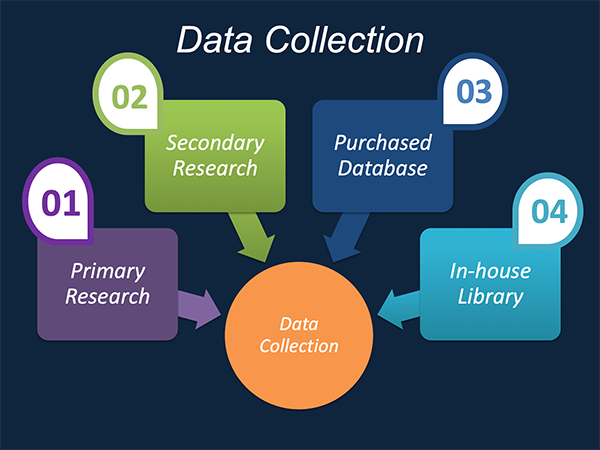
Data Synthesis: This stage includes the evaluation and assessment of all the data acquired from the primary and secondary research. It likewise includes in evaluating the information for any disparity watched while information gathering identified with the market. The data & information is gathered with consideration to the heterogeneity of sources. Scientific and statistical methods are implemented for synthesizing dissimilar information sets and provide the relevant data which is fundamental for formulating strategies. Our organization has broad involvement with information amalgamation where the information goes through different stages:


Market Formulation & Deduction: The last stage includes assigning the data & information in a suitable way in order to derive market size. Analyst reviews and domain based opinions based on holistic approach of market estimation combined with industry investigation additionally features a crucial role in this stage.
This stage includes with the finalization of the market size and numbers that we have gathered from primary and secondary research. With the data & information addition, we ensure that there is no gap in the market information. Market trend analysis is finished by our analysts by utilizing data extrapolation procedures, which give the most ideal figures to the market.
Data Validation: Validation is the most crucial step in the process. Validation & re-validation through scientifically designed technique and process that helps us finalize data-points to be used for final calculations. This stage also involves with the data triangulation process. Data triangulation generally implicates the cross validation and matching the data which has been collected from primary and secondary research methods.





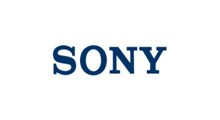

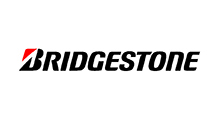

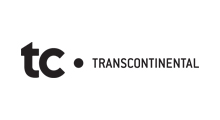















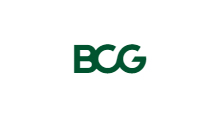


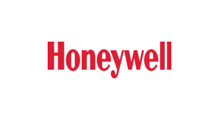

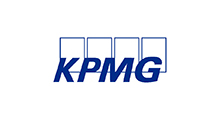
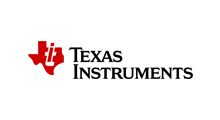



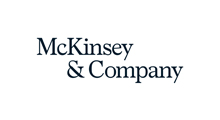

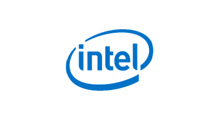







Free Customization
Countries can be added on demand
Free yearly update on purchase of Multi/Corporate User License
Companies served till date

We serve our customers 24x7 for 365 days through calls, emails and live chat options.
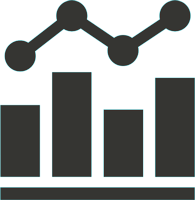
Huge database of exceptional market reports bringing market intelligence to your fingertips.

SSL enabled, we offer you various secured payment options for risk free purchase.